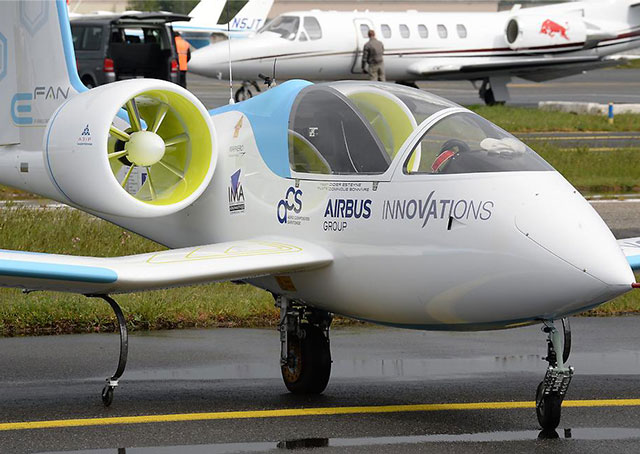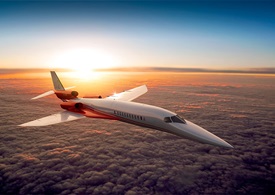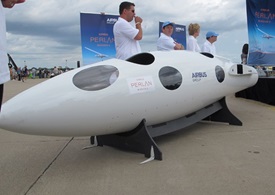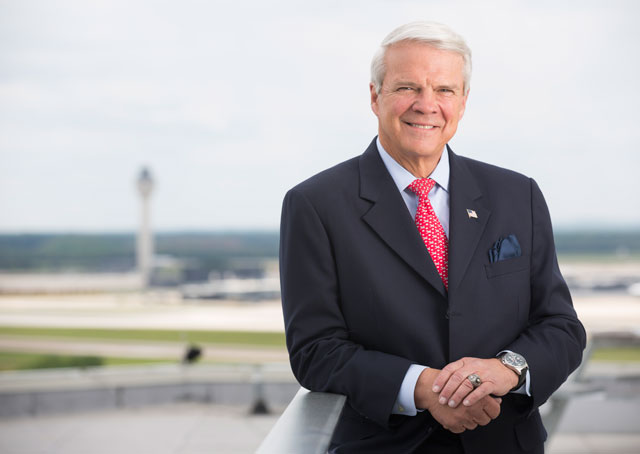Airbus crafts 'disruptive' technology
Aerospace giant backs aircraft large and small

One might think Airbus is suddenly aiming small, so to speak, perhaps establishing a beachhead in general aviation that Wichita, Kansas, companies might worry about.
The multinational giant whose name is long associated with airlines has invested recently in a few notable aviation development efforts on a smaller scale. The electric E-Fan, an all-electric prototype that made its first flight in March, will be certified as a two-seat trainer and four-seat general aviation aircraft, the company announced in July—the same month that a partnership with the Perlan Project, a team building a high-altitude glider primarily for scientific research, was announced. Less than two months later, Aerion, a company working to bring a supersonic business jet to market in 2021, announced it has also secured Airbus backing, an agreement that will provide engineering and certification support from Airbus that promises to accelerate Aerion’s effort.
All of that begged a question: Is Airbus moving into the turf of Textron, Cirrus, and the like? Not exactly, said Chairman and CEO Allan McArtor, who oversees Airbus Group, Inc. operations and strategy in North America and Latin America.
“Our intent really is not to enter the general aviation market per se,” McArtor said in a telephone interview. “That would be really a departure from our core business.”
The E-Fan project (presented in detail on the Airbus Group website) will indeed be built by a subsidiary created for the purpose, and “it might spin off rather interestingly,” McArtor said. Scaled up to 50 or 100 seats, however, it could become a hot ticket for airlines seeking a low-noise, zero emission people-mover that requires no jet fuel. “Now we’re talking.”

McArtor said a dedicated team is working with Aerion to develop and certify the Mach 1.4 business jet envisioned. Airbus Group will learn much along the way, though McArtor does not envision that particular aircraft being scaled up for the transportation market. Airlines, said the former airline executive and FAA administrator, are primarily focused on seat mile cost rather than speed.
“The sonic modeling that they’ve done, sonic laminar flow, is very interesting to us,” McArtor said. “We have no intention of building or offering a supersonic business jet, but we like their business plan … for the first mover, the first guy, there’s a legitimate market.”

McArtor said Perlan II, the plan to build a carbon fiber glider able to reach 90,000 feet or higher, is interesting because of the data it will be able to collect to advance understanding of the uppermost reaches of the atmosphere. It didn’t hurt that some members of the Airbus Group leadership team are glider enthusiasts, McArtor added.
These projects are higher visibility than some, but by no means the sum total of Airbus Group investments in innovation. McArtor said the company is backing research that goes beyond aviation and aerospace, and the Airbus Group website offers details on many efforts that extend beyond aviation and aerospace. (Airbus, meanwhile, offers a look at future concepts for commercial aviation here.)
“What we’re really well-known for is innovation,” McArtor said. “For more than 40 years that’s been our value add to the industry. I think you’ll see Airbus more visible in the future as we continue to explore these very, very interesting and some very disruptive technologies.”
Disruptive, you say?
McArtor offered a couple of teasers about what else is in the pipeline: antennas being developed to significantly improve satellite connectivity for aircraft, and laser-based measurement of airspeed and angle of attack that could prove particularly useful for helicopters, replacing pitot static systems unable to provide precise or accurate airspeed information below 40 knots.
Airbus Group opened an innovation and research hub on the campus of California Polytechnic State University in San Luis Obispo, California, in 2012, and McArtor said that is one of many collaborations with universities, laboratories, and other centers of innovation that promise to raise the company profile as a technology engine in the coming years.
“Best to just say stay tuned,” McArtor said.




